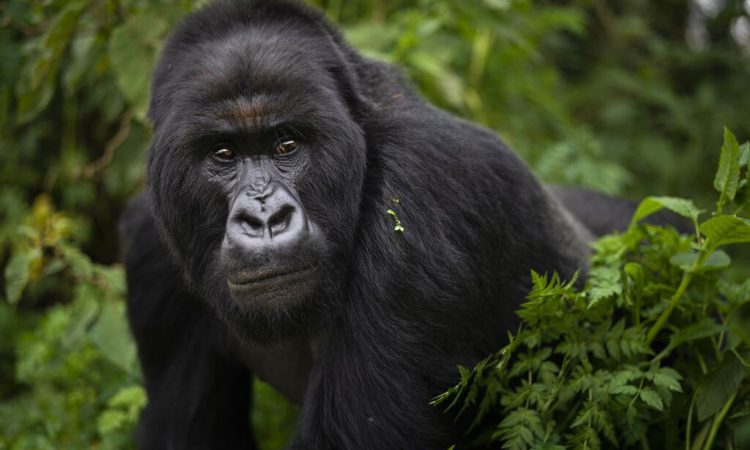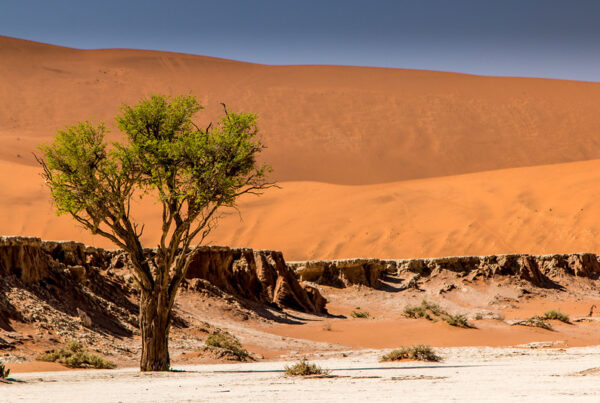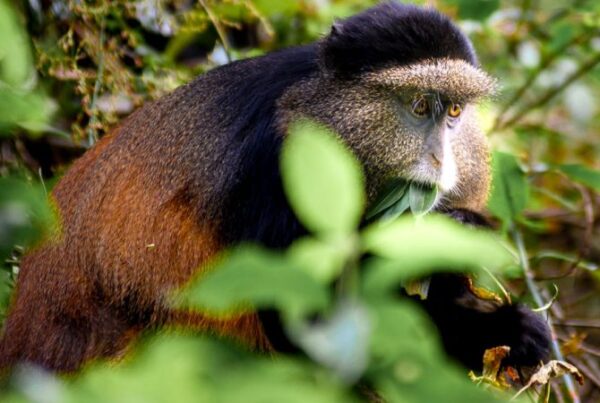Visiting Uganda in September
September in Uganda: Where Calm Meets Wild Beauty
As the world shifts into the last quarter of the year, Uganda in September rises with a serene, golden light. The rains of earlier months have faded, leaving behind lush yet accessible landscapes. The dry season continues, though subtle shifts begin to signal a transitional period. This subtle blend of past greenness and oncoming warmth makes Uganda in September one of the most quietly compelling times to explore.
Travelers often overlook September, placing focus on peak months like July and August. Yet for those who choose this unassuming gem, the rewards are vast. The wildlife remains active, the national parks less crowded, and the local culture deeply alive. Whether it’s tracking mountain gorillas in the early morning mist or cruising along the Nile beneath open skies, September offers balance, clarity, and opportunity.
Climate and Conditions: Mild Dryness with a Hint of Renewal
Uganda’s September weather is largely dry and favorable for travel, especially in the early weeks. The month typically sees moderate temperatures between 23°C and 28°C, with some regions—particularly in the central and southwestern highlands—experiencing cooler mornings and evenings.
Rainfall begins to make an appearance near the end of the month, especially in the southern and western parts of the country. These light showers, however, are usually brief and localized. They freshen the vegetation and lay the dust without hampering travel. Roads and trails remain accessible, and skies often clear soon after showers pass.
The gradual reemergence of greenery reinvigorates landscapes without making them difficult to navigate. Birdlife, too, begins to respond to the seasonal change, adding movement and melody to Uganda’s wilderness zones. For travelers who value mild weather and balanced ecosystems, September emerges as an ideal travel window.
Gorilla Trekking in September: Intimate and Impactful
One of Uganda’s most revered experiences—mountain gorilla trekking—remains outstanding in September. The trails in Bwindi Impenetrable National Park and Mgahinga Gorilla National Park are generally dry and firm, although occasional light rain may create mild slickness in some areas.
The semi-dry conditions mean that gorillas often descend from higher elevations in search of easier food sources, which places them closer to trekking zones. This improves the likelihood of shorter treks and more prolonged, relaxed viewing sessions.
A key advantage of September is the reduced crowds compared to peak travel months. Trekking groups are smaller, and the atmosphere more tranquil. This not only enhances the intimacy of the experience but also allows for more personal interaction with guides and rangers, who offer deep insights into gorilla behavior and conservation efforts.
Photographers benefit as well, with the slightly overcast skies providing soft light, minimizing harsh shadows and glare during sightings. For those in search of a meaningful, less hurried encounter with these magnificent creatures, September proves remarkably rewarding.
Wildlife Viewing Across Uganda’s National Parks
While gorillas remain a powerful draw, Uganda’s savannah parks in September are equally compelling. The dry season ensures clear game drive routes and high visibility across landscapes like Queen Elizabeth National Park, Murchison Falls National Park, and Kidepo Valley National Park.
In Queen Elizabeth National Park, wildlife congregates around the Kazinga Channel, where elephants, buffaloes, crocodiles, and hippos gather in dense numbers. Game drives through the Kasenyi Plains remain productive, with lion sightings frequently reported. The Ishasha sector, famed for its tree-climbing lions, remains accessible, though light rains near the month’s end may enhance the green backdrop and increase prey movement.
Murchison Falls National Park, with its unique combination of savannah, woodland, and riverine habitats, continues to thrive during September. Game drives near the Buligi area provide excellent chances to spot giraffes, hartebeests, and leopards. The Nile river cruise remains a highlight, offering close encounters with aquatic life and birds, all set against the thunder of the iconic Murchison Falls.
In Kidepo Valley, the semi-arid conditions persist, and wildlife visibility remains unparalleled. Herds of zebras and elands are frequently seen against the dramatic mountainous backdrop. The absence of tourist crowds here in September gives travelers the rare experience of solitude amid raw wilderness.
Birding Opportunities: A Prelude to the Migrant Arrival
Though the peak birding season arrives in November with the influx of migratory species, September signals the start of avian transition. Resident birds remain active, and early migrants begin to trickle in from the northern hemisphere.
In Kibale Forest, the calls of turacos and hornbills echo through the treetops, while swamp areas like Mabamba Bay near Lake Victoria continue to offer chances to spot the shoebill stork. The semi-cloudy skies of September enhance visibility for birders, and the cooler mornings draw a greater variety of species into open areas.
Regions such as Budongo Forest and Semuliki National Park also begin to stir with more diverse birdlife, making September an excellent month for those who seek to experience both forest and savannah birding without the larger crowds of the later high season.
Culture and Local Engagements in September
Beyond the natural beauty, Uganda’s cultural tapestry remains vibrant in September. With agricultural communities engaged in early harvesting, particularly in the west and north, visitors may witness traditional farming methods, communal celebrations, and seasonal storytelling.
In Fort Portal, cultural tours to the Tooro Kingdom Palace and surrounding villages allow for authentic exchanges. In Kampala, art galleries, craft markets, and museums remain open and active, offering insight into Uganda’s past and evolving creative scene.
The slightly quieter nature of tourism in September means that these interactions can feel more personal and less rushed. Travelers can spend more time asking questions, learning customs, and even participating in local dances or cooking sessions. In many ways, this month fosters deeper human connections, as locals are less preoccupied with high tourism volume and more open to meaningful interaction.
Scenic Exploration: Mountains, Lakes, and Falls
The natural attractions of Uganda go beyond its wildlife. In September, the country’s mountains, lakes, and waterfalls offer peaceful and dramatic settings for exploration.
In the east, Mount Elgon and the Sipi Falls area remain accessible, with hiking trails open and rivers flowing steadily. The views across the Karamoja plains are clear and rewarding. The light rains rejuvenate the landscape without making trails dangerous or impassable.
In the southwest, Lake Bunyonyi—with its emerald islands and serene waters—becomes an ideal location for relaxation or canoeing between local communities. Lake Mburo National Park, often overshadowed by larger parks, is another hidden treasure in September. It provides a blend of game drives, walking safaris, and boat rides, all within a compact yet ecologically diverse landscape.
The continued dry conditions also keep Rwenzori trekking viable during early September. Though cloud cover can increase slightly as the month progresses, clear mornings still afford panoramic views of the “Mountains of the Moon,” while streams and waterfalls are freshly replenished.
Travel Practicalities and Considerations
Travel in Uganda during September remains smooth and largely predictable. Major highways are dry and accessible, while domestic flights run without major disruption. Tour operators, lodges, and national park staff remain fully active and responsive, ensuring safe and well-guided experiences.
Gorilla and chimpanzee permits are easier to secure than in July or August, and many accommodations offer off-peak discounts during mid to late September. This makes the month financially attractive for budget-conscious travelers seeking premium experiences at lower cost.
Light clothing remains ideal for most of the day, but rain jackets and hiking boots should be included as conditions may shift during late afternoons. Visitors to high-altitude zones should also pack layers for chilly mornings and evenings.
September in Uganda: A Quiet Season of Promise
There is a subtle power in Uganda’s September atmosphere. It is a month that whispers rather than shouts—a time when the wild meets the calm, and the adventurer finds space to reflect, observe, and connect. Without the crowds, with softer colors and gentler breezes, the country reveals itself in a slower, richer rhythm.
This is the Uganda of long shadows, lingering sunsets, and silent moments beside elephants grazing on golden plains. It is a time to move deliberately, listen attentively, and feel fully.
Begin Your September Safari with WildHorn Africa
To explore Uganda in its September splendor requires a thoughtful and experienced guide, one that understands the subtle shifts of the season and the individual needs of each traveler. WildHorn Africa has been trusted to curate such journeys, drawing on deep local knowledge, community relationships, and a passion for delivering truly unforgettable adventures.
With WildHorn Africa, every itinerary is more than just a route—it is a story in motion, told across landscapes, through wildlife, and within heartfelt cultural encounters. Whether it’s your first visit to Uganda or a return to its wild heart, September is best experienced with those who know it intimately.
Plan your journey with WildHorn Africa today and let your story unfold in the land where nature never hurries, and beauty is found in every detail.





 WildHorn Africa – Authentic and unforgettable tours across Africa, guided by local experts who know the land, wildlife, and culture best.
WildHorn Africa – Authentic and unforgettable tours across Africa, guided by local experts who know the land, wildlife, and culture best.


